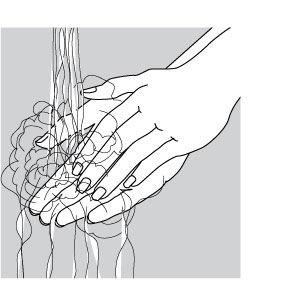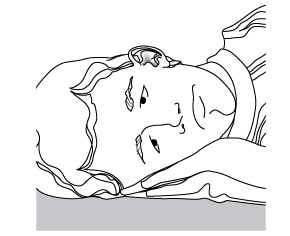Ciprodex
Generic name: ciprofloxacin and dexamethasone otic
Drug class: Otic steroids with anti-infectives
Medically reviewed by A Ras MD.
What is Ciprodex?
Ciprodex is a prescription medicine used in the ear only (otic use) that contains 2 medicines, a quinolone antibiotic medicine called ciprofloxacin and a corticosteroid medicine called dexamethasone.
Ciprodex is used in adults and children 6 months of age or older to treat certain types of infections caused by certain germs called bacteria. These bacterial infections include middle ear infection (known as acute otitis media or AOM) in people who have a tube in their eardrum known as a tympanostomy to prevent having too much fluid in the middle ear, outer ear canal infection (known as acute otitis externa or AOE)
It is not known if Ciprodex is safe and effective in children under 6 months of age.
Description
CIPRODEX (ciprofloxacin 0.3% and dexamethasone 0.1%) Sterile Otic Suspension contains the quinolone antimicrobial, ciprofloxacin hydrochloride, combined with the corticosteroid, dexamethasone, in a sterile, preserved suspension for otic use. Each mL of CIPRODEX contains ciprofloxacin hydrochloride (equivalent to 3 mg ciprofloxacin base), 1 mg dexamethasone, and 0.1 mg benzalkonium chloride as a preservative. The inactive ingredients are acetic acid, boric acid, edetate disodium, hydroxyethyl cellulose, purified water, sodium acetate, sodium chloride, and tyloxapol. Sodium hydroxide or hydrochloric acid may be added for adjustment of pH.
Ciprofloxacin, a quinolone antimicrobial is available as the monohydrochloride monohydrate salt of 1-cyclopropyl-6-fluoro-1,4-dihydro-4-oxo-7-(1-piperazinyl)-3-quinoline carboxylic acid. The empirical formula is C17H18FN3O3·HCl·H2O. The molecular weight is 385.82 g/mol and the structural formula is:
Figure 1: Structure of Ciprofloxacin

Dexamethasone, 9-fluoro-11(beta),17,21-trihydroxy-16(alpha)-methylpregna-1,4-diene-3,20-dione, is a corticosteroid. The empirical formula is C22H29FO5. The molecular weight is 392.46 g/mol and the structural formula is:
Figure 2: Structure of Dexamethasone

Mechanism of Action
Ciprofloxacin is a fluoroquinolone antibacterial .
Dexamethasone, a corticosteroid, has been shown to suppress inflammation by inhibiting multiple inflammatory cytokines resulting in decreased edema, fibrin deposition, capillary leakage, and migration of inflammatory cells.
What is the most important information I should know about Ciprodex?
- Use Ciprodex exactly as your doctor tells you to use it.
- Ciprodex is for use in the ear only (otic use). Do not inject Ciprodex or use Ciprodex in the eye.
- Shake Ciprodex well before each use.
- Do not touch your ear, fingers, or other surfaces with the tip of the Ciprodex bottle. You may get bacteria on the tip of the bottle that can cause you to get another infection.
Who should not use Ciprodex?
Do not use Ciprodex if you:
- are allergic to ciprofloxacin, quinolones, or any of the ingredients in Ciprodex. See the end of this guide for a complete list of ingredients in Ciprodex.
- have an outer ear canal infection caused by certain viruses including the herpes simplex virus
- have an ear infection caused by a fungus
What should I tell my healthcare provider before using Ciprodex?
Before using Ciprodex, tell your doctor about all of your medical conditions, including if you:
- are pregnant or plan to become pregnant. It is not known if Ciprodex will harm your unborn baby.
- are breastfeeding or plan to breastfeed. Ciprodex can pass into your breast milk and may harm your baby. You and your doctor should decide if you will use Ciprodex or breastfeed. You should not do both.
Tell your doctor about all the medicines you take, including prescription and over-the-counter medicines, vitamins, and herbal supplements.
How should I use Ciprodex?
- Read the detailed Instructions for Use that come with Ciprodex.
- Use Ciprodex exactly as your doctor tells you to.
- Ciprodex is for use in the ear only (otic use). Do not use Ciprodex in the eye or inject Ciprodex.
- Apply 4 drops of Ciprodex into the affected ear 2 times a day for 7 days.
- Do not stop using Ciprodex unless your doctor tells you to, even if your symptoms improve.
If your symptoms do not improve after 7 days of treatment with Ciprodex, call your doctor.
Call your doctor right away if:
- you have fluid that continues to drain from your ear (otorrhea) after you have finished your treatment with Ciprodex
- you have fluid that drains from your ear 2 or more times within 6 months after you stop treatment with Ciprodex
What are the possible side effects of Ciprodex?
Ciprodex may cause serious side effects, including:
Allergic reactions. Stop using Ciprodex and call your doctor if you have any of the following signs or symptoms of an allergic reaction:
- hives (urticaria)
- trouble breathing
- swelling of your face, lips, mouth, or tongue
- dizziness
- fast heartbeat, or pounding in your chest
- rash
- itching
The most common side effects of Ciprodex include:
- ear discomfort
- ear pain
- ear itching (pruritus)
These are not all the possible side effects of Ciprodex. Call your doctor for medical advice about side effects. You may report side effects to FDA at 1-800-FDA-1088.
General information about the safe and effective use of Ciprodex
Medicines are sometimes prescribed for purposes other than those listed in a patient information leaflet. Do not use Ciprodex for a condition for which it was not prescribed. Do not use Ciprodex in the eye. Do not give Ciprodex to other people, even if they have the same symptoms that you have. It may harm them. You can ask your pharmacist or doctor for information about Ciprodex that is written for health professionals.
How should I store Ciprodex?
- Store Ciprodex at room temperature between 68°F to 77°F (20°C to 25°C).
- Do not freeze Ciprodex.
- Keep Ciprodex out of light.
Keep Ciprodex and all medicines out of the reach of children.
What are the ingredients in Ciprodex?
Active ingredients: ciprofloxacin hydrochloride, dexamethasone, and benzalkonium chloride as a preservative.
Inactive ingredients: acetic acid, boric acid, edetate disodium, hydroxyethyl cellulose, purified water, sodium acetate, sodium chloride, and tyloxapol. Sodium hydroxide or hydrochloric acid may be added for adjustment of pH.
Instructions for use
Read this Instructions for Use that comes with Ciprodex before you start using it and each time you get a refill. There may be new information. This information does not take the place of talking with your doctor about your medical condition or treatment.
How should I use Ciprodex?

Step 1. Wash your hands with soap and water.
Step 2. Warm the bottle of Ciprodex by rolling the bottle between your hands for 1 to 2 minutes (See Figure A). Shake the bottle of Ciprodex well.

Figure A
Step 3. Remove the Ciprodex cap. Put the cap in a clean and dry area. Do not let the tip of the bottle touch your ear, fingers or other surfaces.
Step 4. Lie down on your side so that the affected ear faces upward (See Figure B).

Figure B
Step 5. Hold the bottle of Ciprodex between your thumb and index finger (See Figure C). Place the tip of the bottle close to your ear. Be careful not to touch your fingers or ear with the tip of the bottle.

Figure C
Step 6. Gently squeeze the bottle and let 4 drops of Ciprodex fall into the affected ear. If a drop misses your ear, follow the instructions in Step 5 again.
Step 7. Stay on your side with the affected ear facing upward (See Figure B).
It is important that you follow the instructions below for your specific ear infection, to allow Ciprodex to enter the affected part of your ear.
Step 8.
If you use Ciprodex to treat a middle ear infection, and you have a tube in your eardrum known as a tympanostomy:
- Gently press the part of the ear known as the tragus (See Figure D) 5 times using a pumping motion (See Figure D). This will allow the drops of Ciprodex to enter your middle ear.
- Remain on your side with the affected ear facing upward (See Figure B) for 1 minute.

Figure D
If you use Ciprodex to treat an outer ear canal infection:
- Gently pull the outer ear lobe upward and backward (See Figure E). This will allow the drops of Ciprodex to enter your ear canal.
- Remain on your side with the affected ear facing upward (See Figure B) for 1 minute.

Figure E
Step 9. If your doctor has told you to use Ciprodex in both ears, repeat steps 5-8 for your other ear.
Step 10. Put the cap back on the bottle and close it tightly.
Step 11. After you have used all of your Ciprodex doses, there may be some Ciprodex left in the bottle. Throw the bottle away.
Label
PRINCIPAL DISPLAY PANEL
- NDC 0078-0799-75
- Rx Only
- CIPRODEX®
- (ciprofloxacin 0.3% and dexamethasone 0.1%)
- STERILE OTIC SUSPENSION
- FOR USE IN EARS ONLY
- 7.5 mL
- NOVARTIS

SRC: NLM .
